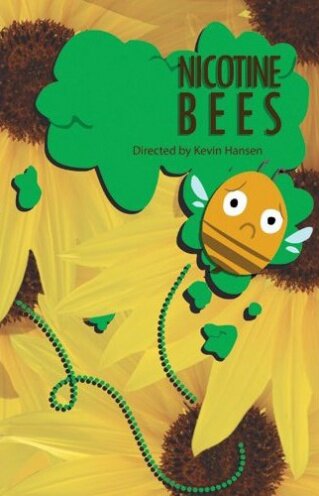
Back in December 2010, we noted the mounting evidence in the case against the safe use of neonicotinoid pesticides, and specifically their relationship to what’s now a six-year outbreak of colony collapse disorder. Over that time, one-third or more of U.S. honey bee colonies have been wiped out.
Now more evidence, in the form of two studies from French and British researchers, have arisen for pesticide makers to dispute, just as they did initial claims. In the New York Times, Carl Zimmer writes (“2 Studies Point to Common Pesticide as a Culprit in Declining Bee Colonies“) that the findings indicate the chemical may “fog” bees’ brains, and also impair the production of new queens.
In both studies, bees were fed traces of neonicotinoids in their sugar water. In the French study, some ten to thirty percent of bees became disoriented and were unable to find their way back to the hive. Computer modeling indicates that this rate of bee-blindness would lead to colony collapse. Skeptics are all, “Computers! What do they know?”
In the British study, using bumblebees, the hives “exposed to neonicotinoids produced 85 percent fewer queens,” summarizes Zimmer, which seems a clear enough finding.
Bayer CropScience took a little time off from “promoting bee health” to dispute the findings, claiming that the dosage was excessive, but a new Harvard study contradicts them. Reports Scientific American (“Common Pesticide Implicated Bee Colony Collapse Disorder“): “The authors of the Harvard-based paper tried a variety of doses (ranging from 20 micrograms of insecticide per kilogram of corn syrup to 200 micrograms), all of which led to colony deaths.”
This allows me the opportunity to quote Dutch toxicologist Henk Tennekes again, who must be feeling sadly vindicated:
Neonicotinoid insecticides act by causing virtually irreversible blockage of postsynaptic nicotinergic acetylcholine receptors (nAChRs) in the central nervous system of insects. The damage is cumulative, and with every exposure more receptors are blocked. In fact, there may not be a safe level of exposure.
The EPA lists the European countries that have already taken action in banning neonicotinoids. It does not list the news from, say, Italy, that a bounceback in bee population was seen almost immediately.
UPDATE: The Coalition Against Bayer Dangers wrote in with news on “protests and countermotions on this issue at Bayer´s upcoming shareholder meeting in Cologne.” They make reference to several studies of interest on neonicotinoids, including UN Environment Program (UNEP) report that warned:
Various studies revealed the high toxicity of chemicals such as Imidacloprid, Clothianidin, Thiamethoxam and associated ingredients for animals such as cats, fish, rats, rabbits, birds and earthworms. Laboratory studies have shown that such chemicals can cause losses of sense of direction, impair memory and brain metabolism, and cause mortality.